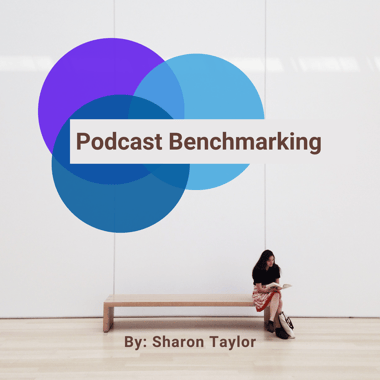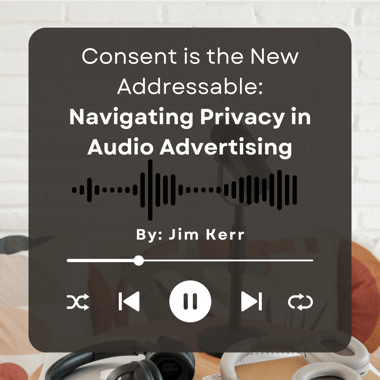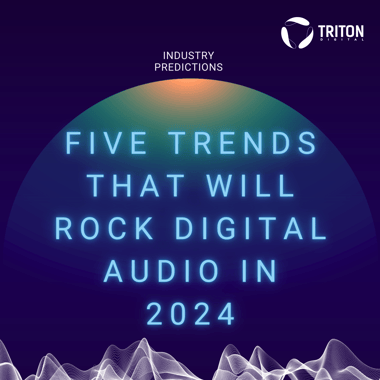Digital Thrills The Radio Star

Posted via Forbes.com
Guest post written by Patrick Reynolds
Patrick Reynolds is executive VP of Triton Digital. He previously served as CMO of Tweeter Home Entertainment Group.
In 1981 the MTV rocket burst into space and onto our TV screens. That first video aired, The Buggles’ “Video Killed the Radio Star,” (you can watch the video below) was both exhilarating and ominous.
For the better part of a century it was radio that broke bands, started conversations, shaped what was cool and was a go-to medium for advertisers of dish soap, satellite dishes and everything in between. That pre-eminence was now being disrupted by video.
Fast-forward 30 years and you’ll find the “Radio Star” alive and kicking – different in many important ways, but very much alive. Really it wasn’t JJ Jackson and Martha Quinn who altered the course of radio or posed any serious threat. They were DJs with faces for TV, not radio. What actually changed radio was technology. The fear of it. The use of it. The making friends with it.
Radio had a fairly formulaic model for decades. Music, news, talk and sports were put together in various combinations to an audience of estimated size and attentiveness. The same went for ads. They were usually 30- or 60-second “theater of the mind” spots incorporating storytelling and music or sound effects into a sales pitch. Pretty simple.
Enter digital — the next disruption, currently in heavy rotation. Online content was rarely one-dimensional. It incorporated text, pictures, video and a host of other elements to tell the story, involve the audience and keep the user experience fresh. Not only that, virtually all of it was precisely measured and fully targetable for advertisers. Campaigns targeting women could advertise to them and them alone online. High relevance meets low waste.
Suddenly radio’s fire hose approach to content and advertising, where one size fits all, was feeling limiting.
Then Slacker, Rhapsody and especially Pandora hit the air from a uniquely digital perspective. Radio now had company. These digital natives were primarily advertiser-supported without any allegiances to old models or thinking. They began swimming in the same waters as WXYZ and offering higher levels of choice, customization and control to both listeners and advertisers that traditional radio could not.
Game on. Time to adapt.
Interestingly, this summer will also mark Pandora’s one-year anniversary as a public company. While much financial model debate has ensued since Pandora’s IPO, what cannot be denied is the traction it’s gaining with the public. Last month Pandora served more than one billion hours of content.
Why do consumers like these new services so?
• Co-creation
Internet audio services have libraries of anywhere from 5-15 million songs. The inch-deep Top 40 list this isn’t. It’s for real music lovers. Rather than letting listeners drown in the deep end of the pool of choice, they skillfully use recommendation engines based on prior listening, social media integrations so your friends can suggest songs and playlists, and other forms of curation to steer with you.
• VIP Access
Radio was once something folks huddled around. No more. Radio is now anywhere you are as long as you have a phone or a laptop (to say nothing of Consumer Electronics companies embedding Internet radios into everything from fridges to flat-panels). Pandora, Slacker and others have more than half their audiences listening via mobile. Radio has always been the ultimate companion medium — the best media for when you’re doing something else too. Today people are busier than ever. Internet radio is right by their side.
• WYOU
Technology has injected even more than portability into the equation. In addition to listening to your local station wherever and whenever you choose, technology has made it possible to listen to any station from any place whenever and wherever you choose, free from the constraint of radio towers. If you’re from Boston but living in New York, follow the Sox by listening to the local sports talk from Boston. If you want to keep in touch with what’s happening across the pond, listen to the BBC. Listeners can listen to whatever they want online. Broadcasters can reach an audience only limited by the quality of their content. Advertisers can offer relevant, localized ads to an interested audience. Win. Win. Win.
• The Lean-In
While radio and Internet audio are great in the background, technology has increasingly brought it out into the light. Say you’re at your desk working away while listening to your favorite station on your laptop. You hear a song you like. You’re intrigued. You pull up the player and get the lyrics. The bio of the band. Pictures. Videos. Tour dates. Even the option to buy the song or album in many cases. It’s a very interactive, two-way experience. This combination of lean-in and lean-back makes Internet audio distinct. It’s engaging without being invasive.
• The Green Field
Internet audio diverges from traditional radio when it comes to advertising. The typical commercial radio station in your town plays upwards of 12 minutes of ads per hour, most of which come in 30- or even 60-second increments. That’s a lot of yacketa in this day and age. Online ads tend to not only be fewer, but shorter. This powerful addition by subtraction goes a long way toward explaining the meteoric rise of some pure play stations.
• Pour Some Sugar in my Bowl
Online, the pure plays have enjoyed a big lead in audience growth. As a result, advertising dollars are beginning to flow to them in quantity. Not surprisingly, this has traditional powerhouses like Clear Channel, CBS and Cumulus going digital at a much faster clip than ever before. Clear Channel’s iHeart Radio’s blend of DJ-curated stations plus listener choice is poised to challenge all comers. As a result listeners can expect an even better product. More features, less clutter and continued ramping up of choice, customization and control. A renewed fight for listeners is on(line). That should be music to everyone’s ears.
So, no video did not kill (the) radio (star.) In fact there are now lots of videos on stations’ websites. Ironic. Internet radio is following suit, enabled by digital technologies and embraced by mobile consumption. With US Smartphone listeners projected to swell to nearly eighty-million by 2016, you might say it is right in tune with the times. And the Buggles?
Back to blogRelated Articles
Keep on reading the stuff you love

Podcast Benchmarking

Consent is the New Addressable: Navigating Privacy in Audio Advertising
